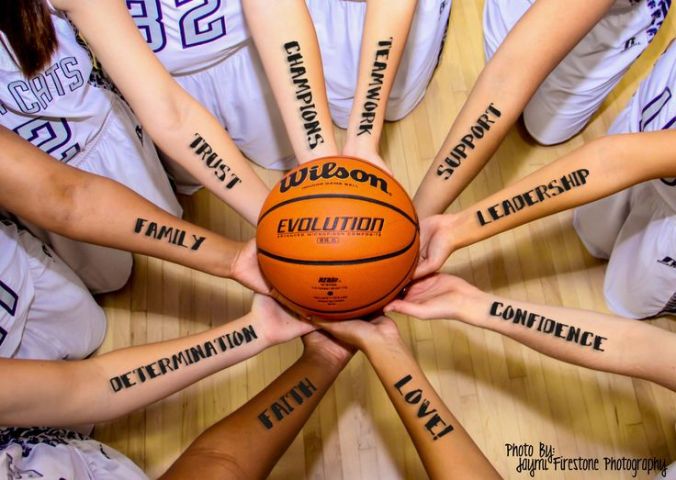
Talent wins games, but teamwork and intelligence wins championships. – Michael Jordan
Team work is a product of people working together. The current post is the second part of a two part post on the dimensions of team effectiveness – success factors. To quickly recap, although every team is different; when you take away the specific task and context, all teams are fundamentally alike. By that, I mean all teams expend some effort to get their mission accomplished. Throughout the literature there are six important factors that I feel are important to address (Greenberg, 2010; Kabaga & Browing, 2003).
- A clear purpose
- An empowering team structure
- Strong organizational support
- Positive internal relationships
- Well-tended external relationships
- Efficient informational management
These areas can then be used to help further define a team’s success. This post will address the last three: although all of the six are important to a team’s success. Specifically, I cover some symptoms of dysfunction and a recommendation for success.
4. Positive internal relationships
Maintaining positive internal relationships within your team is extremely important. There are many different kinds of team difficulties and deficiencies that strain relationships and surface as bad attitudes, mistrust, and power struggles. In addition, team roles that are unfilled, and a lack of organizational support, no high-level sponsor, and a lack of resources all can cause a team to perform sluggishly but look like individual problems. Resentment and blame may follow.
Symptoms
- Favoritism: When some members are perceived as having a closer relationship with the team leader than others, it’s likely that the team isn’t enjoying full cooperation among all its members.
- Safe tactics: Tactics that just barely satisfy team objectives may be a sign of poor or weak relationships among members. In the absence of robust relationships, teams may value harmony above finding the optimal ways to do things. The tactics they adopt may be designed primarily to minimize conflict and strife.
- Turnover: When individuals consistently find reasons why they can no longer serve on the team, it’s often a sign of disagreeable, stressful relationships among members.
Recommendation
Even when there is a clear purpose, appropriate knowledge, an empowering team structure, and good organizational support, personality conflicts and unproductive relationships may hinder the team’s work. When this is the case a good intervention might need to be a series of activities. My two suggestions would be an offsite and an assessment. The offsite could be used to build camaraderie, reinforce team identity, pride, and the vision of the team. The second would be to utilize an assessment; they can give the team a clearer view of strengths and complementary working styles of its members.
5. Well-tended external relationships
No team exists in a vacuum. Effective, well-performing teams understand the needs and perspectives of many external stakeholders, some inside the organization and some outside. In particular, effective teams operate with the awareness that the external environment is constantly changing.
Symptoms
- Playing politics: Take a close look at how the team relates to stakeholders in the company, and see if undue weight is being given to organizational politics.
- Angry suppliers: If vendors are complaining, if often indicates that the team doesn’t understand their operations and constraints.
- Alienated customers or clients: The purpose of a team frequently relates directly to serving and satisfying the organization’s clients. Unhappy customers may be a sign that the team has lost sights of its purpose.
Recommendation
If your team isn’t effectively using its external relationships, one simple action to take is to have some who represents one of those relationships (i.e., vendor) to come and speak to the team. Training and coaching can help members understand stakeholder perspectives, and look beyond attitudes and complaints.
6. Efficient informational management
Managing information is a major challenge in today’s complex geographically dispersed organizations, and one that is often overlooked as it applies to teams. Teams are not effective in the absence of accurate and timely information. Both the team and its external stakeholders need to clearly understand the lines of communication and then need to use those communication channels, or information gaps can become information caverns.
Symptoms
- Missed market changes: When news from the outside world isn’t incorporated into the team’s continuing work, it’s a sign that information-gathering systems need to be revamped.
- Erroneous conclusions: Too many wrong answers and unwise decisions may indicate that the team isn’t receiving and considering enough information to make solid decisions.
- Missed opportunities: If the window of opportunity keeps closing on your team, it may indicate that the team is not getting and disseminating information in a timely manner.
Recommendation
To manage information to bolster effectiveness it is important to consider which communication channel best helps the team overcome performance weakness. When team effort is low for example, less reliance on email and more attention on face-to-face meeting can help renew member efforts by underscoring their cooperative relationships.
References:
Greenberg, J. (2010). Managing behavior in organizations. Pearson Prentice Hall.
Image: https://www.pinterest.com/pin/111745634479612461/
Kabaga & Browing (2003). Maintaing Team Performance. For the Practicing Manager. Center for Creative Leadership.








